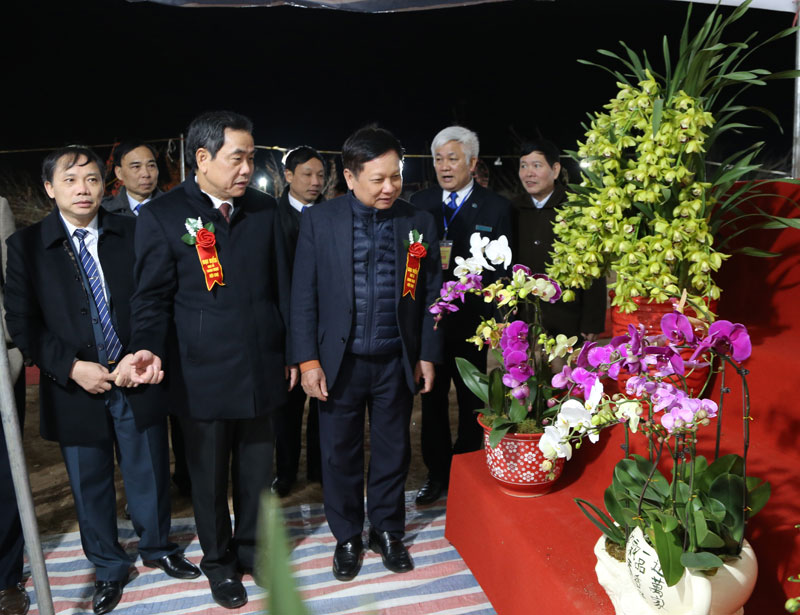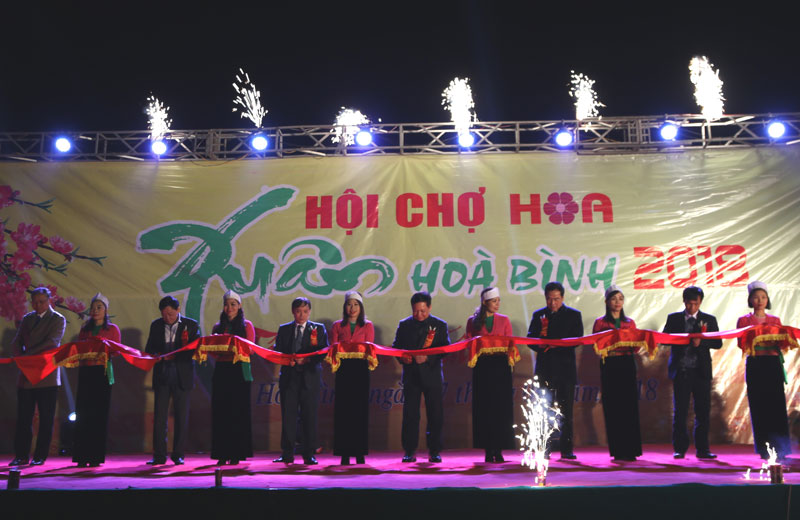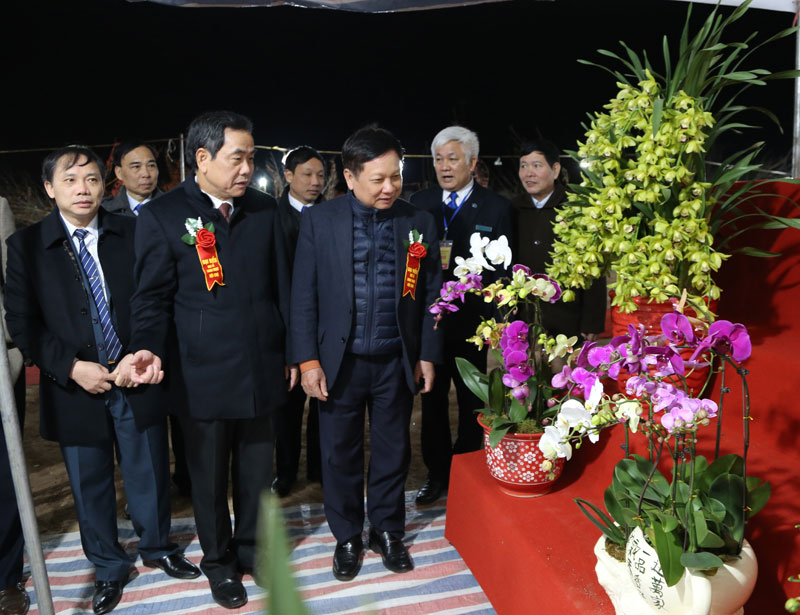
(HBO) - At the Provincial Fair and Exhibition Center in Hoa Binh Square of Hoa Binh City, the provincial People's Committee held the opening ceremony of Hoa Binh spring flower fair in Lunar New Year 2018. It was attended by Mr. Bui Van Tinh, Member of the Central Party Committee, Secretary of the Provincial Party Committee; Mr. Nguyen Van Quang, Deputy Secretary of the provincial Party Committee, Chairman of the provincial People's Committee; Mr. Bui Van Khanh, Vice Chairman of the Provincial People's Committee. Hoa Binh spring flower fair in Lunar New Year has more than 100 booths,in which there are 70 stores of products for Tet; 5,000 m2 of displaying flowers, ornamental plants from organizations, enterprises and business households inside and outside the province.

Provincial leaders and leaders from some
industries cutting the ribbon for the opening ceremony of Spring Flower Fair
Festival of 2018.

Provincial leaders paying a visit to the
Flower Fair Stores at the Spring Flower Fair Festival of 2018.
In the Flower Fair this year, there will be
many kinds of flowers, bonsai such as: peach flowers, kumquat, orchid, apricot
flowers, lily flowers, roses, azalea flowers, poinsettias, lanterns, etc. In
addition, at the flower fair, there will be other fine artifacts such as
driftwood, fine art wood, art pottery, birds, art bonsai plants. In the
evening, there was an art cultural performance.
The Spring Flower Fair is organized to show the
culture of Vietnamese traditional Tet and specific characteristics of Hoa Binh
province. At the same time, it is a chance to serve the people with more
shopping opportunities; creating beautiful identity, passionate about flower
playing
With an increasingly vibrant and widespread emulation movement aimed at building cultured residential areas and cultured families, Yen Thuy District has been making steady progress toward improving both the material and spiritual well-being of its people, while fostering a civilized, prosperous, beautiful, and progressive community.
Once lacking recreational spaces and community facilities, Residential Group 2 in Quynh Lam Ward (Hoa Binh City) has recently received attention for the construction of a new, spacious, and fully equipped cultural house. The project followed the model of state support combined with public contributions in both labor and funding.
The "All people unite to build cultural life" movement, which has been effectively integrated with Kim Boi district’s socio-economic development goals, is fostering a lively spirit of emulation across local residential areas, hamlets, villages, public agencies, and enterprises. In addition, through the initiative, traditional cultural values are being preserved and promoted, while community solidarity and mutual support in poverty reduction and economic development are being strengthened.
A working delegation of the Hoa Binh provincial People’s Committee led by its Permanent Vice Chairman Nguyen Van Toan on June 11 inspected the progress of a project to build the Mo Muong Cultural Heritage Conservation Space linked to tourism services in Hop Phong commune, Cao Phong district.
Born and growing in the heroic land of Muong Dong, Dinh Thi Kieu Dung, a resident in Bo town of Kim Boi district, in her childhood was nurtured by the sweet lullabies of her grandmother and mother. These melodies deeply imprinted on her soul, becoming an inseparable part of her love for her ethnic group's culture. For over 20 years, this love for her hometown has driven Dung to research, collect, and pass down the cultural values of the Muong people to future generations.
In the final days of May, the Ethnic Art Troupe of Hoa Binh Province organized performances to serve the people in remote, mountainous, and particularly disadvantaged areas within the province. These were not just ordinary artistic shows, but they were the meaningful journeys aimed at spreading cultural values, enhancing the spiritual life of the people and contributing to the preservation of ethnic minority cultural identities.




